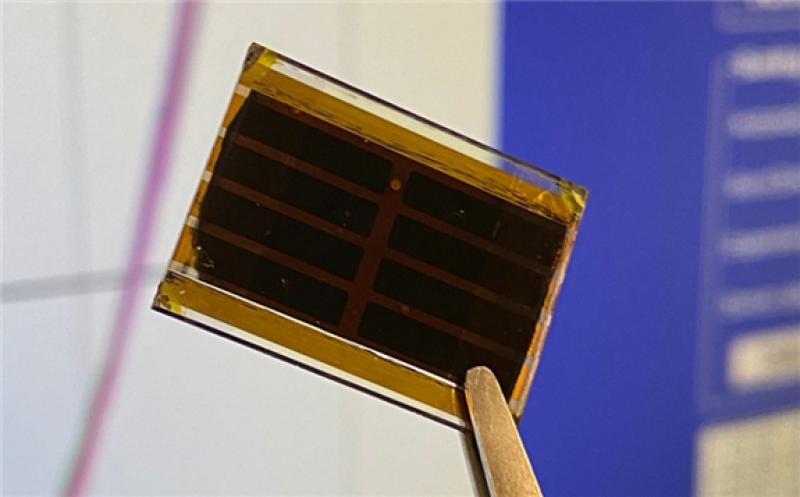As researchers around the world race to develop lead-free perovskite solar cells, scientists at the University of Manchester have developed a perovskite solar cell based on a new technique to prevent potential lead leakage.

The scientists have embedded the cells with a “failsafe” that captures the lead ions. The device is made of hydroxyapatite, which is a naturally occurring mineral form of calcium apatite that is similar to hard tissues in humans, in terms of morphology and composition. The bio-inspired mineral, for example, is a major constituent of human bones.
The solar cell has a power conversion efficiency of 20.98% and is made of mixed mesoporous scaffolds based on hydroxyapatite nanoparticles that are blended with titanium oxide nanoparticles. These scaffolds are designed to limit the concentration of lead released in water from intentionally broken perovskite solar cells by ion sequestration.
“We embarked on this research as we were committed to eliminating an environmental risk,” said researcher Brian Saunders. “That commitment has resulted in increasing both the sustainability and the efficiency of perovskite solar cells.”
The researchers claim that the cell's efficiency increased by around 3% with the addition of hydroxyapatite. They described the cell in “Bioinspired scaffolds that sequester lead ions in physically damaged high efficiency perovskite solar cells,” which was recently published in Chemical Communications.
A similar technique was developed by scientists of the U.S. Department of Energy’s National Renewable Energy Laboratory (NREL) last year. They used a lead-absorbing material to coat the front and rear of a perovskite solar cell stack. The researchers claim that the films captured 96% of lead leakage when the cells were damaged.
Scientists from Purdue University in the United States also recently unveiled new organic-inorganic hybrid perovskite materials. They said the materials can improve the thermal stability of perovskite cells without lead. In addition, researchers from South Korea’s Ulsan National Institute of Science and Technology recently claimed to have identified a tin-based perovskite that could open up possibilities for the application of lead-free perovskites in solar cells.
This article is reproduced at www.pv-magazine.com